1-4 August
We spent two and a half days in Washington, staying only three hundred metres from the Capitol. We walked and even jogged everywhere, clocking an average of over 20,000 steps a day. We visited the main sights; the White House (from a distance), the Washington Monument, the Lincoln and Thomas Jefferson Memorials, the Capitol, the Botanic Gardens, and the Air Space Museum. We saw the super moon in glorious red; we marvelled at how clean the central area was, with masses of pretty shrubs, flowers, with many birds and butterflies – and even one albino squirrel!
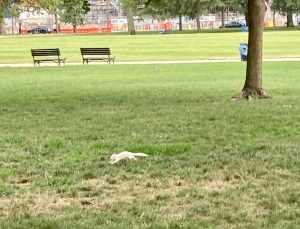

Blood Red Supermoon 
Patriotic colors 
Senate and House on each side
And of course, we passed the E. Barrett Prettyman federal courthouse crammed with the vans, aerials and paraphernalia of the media, as Mr. Donald Trump, John, age 77, was first indicted, Tuesday, and then arraigned, Thursday, for trying to frustrate the election in 2020.
Arriving at our trendy ‘Yotel’, we were denied check-in until exactly 3.00pm – not a second before… We were told that the hotel was run by computers in the cloud. Brave new world. The room was nice though, even if the variable lighting sometimes didn’t respond to our alien touch! But no delay – off we went for an afternoon walk.
The District of Columbia
Our ‘Yotel’ was beautifully located, in spitting distance from the magnificent Capitol. Wide, generous roads, cars leisurely coasting along, only speeding up as traffic lights turned red. Pedestrian crossings with timers, counting the generously allocated seconds before allowed crossings – seemingly slow enough to allow a snooze while waiting.
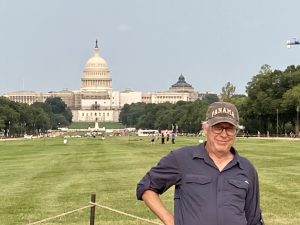
The political capital of the country – one of the most powerful places in the world.
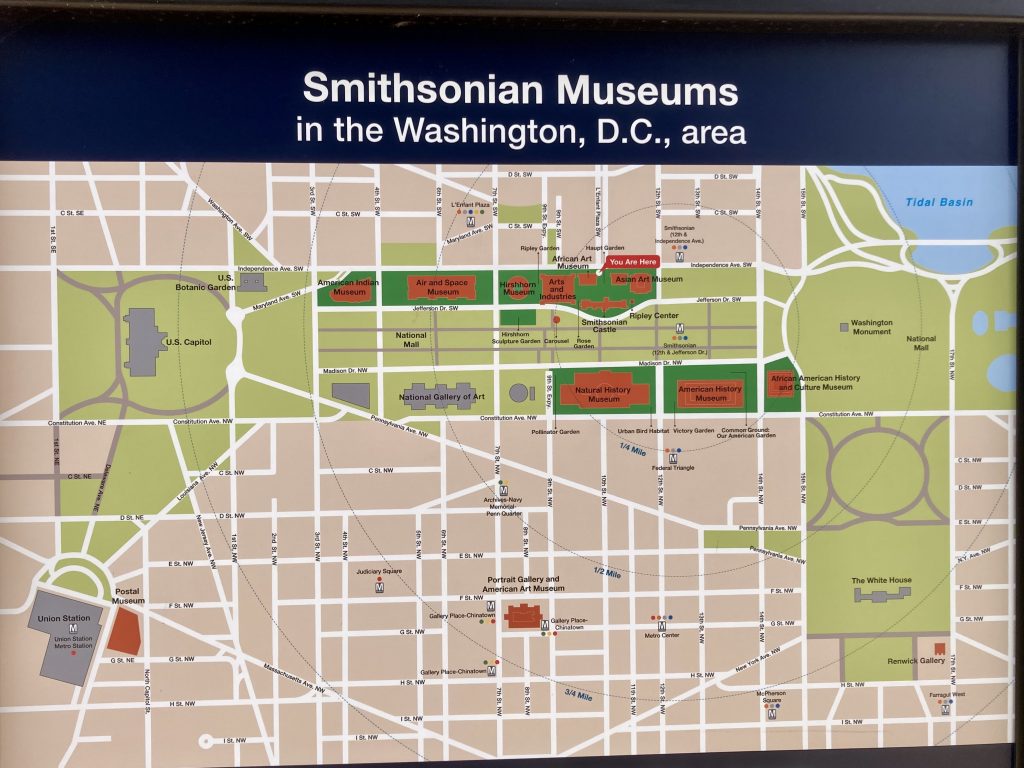
The Capitol faces the ‘National Mall’ a very wide grass expanse lined with mature trees and seemingly unending rows of National Museums on each side. At the far end of the Mall towers the fulcrum of the city – the Washington Monument.
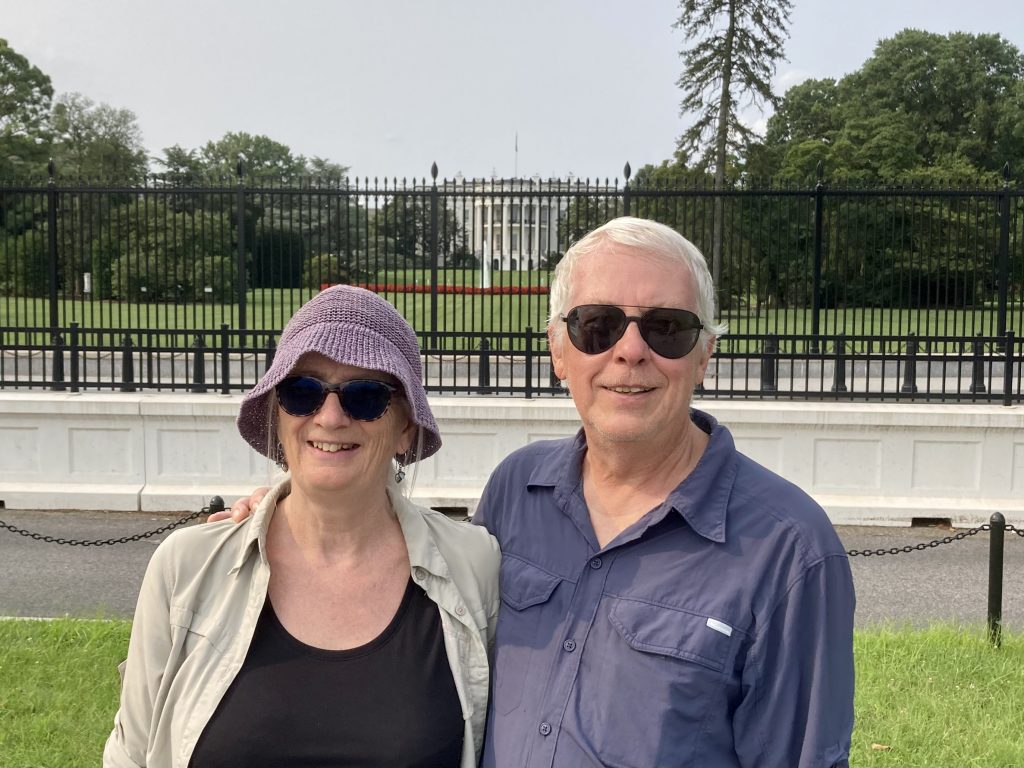
When there, turn to the right and you may glimpse the White House, behind a formidable tree canopy and even more unassailable iron fencing. Lynne was able to stand right beside the iron fencing of the garden, back in 1969, but no longer.
Behind the Washington Monument, a series of war memorials, stretching to the Lincoln Memorial. Completing the geographic cross, but not quite visible from the base of the Washington Monument, is the Thomas Jefferson Memorial.
What is striking is the scale of the buildings and memorials, and the space between them. The wide walkways were dotted with healthy runners and not always healthy riders on the ubiquitous electric scooters. Walking through all this was truly inspiring for Peter, as this was his first visit. Lynne was a bit more cynical about the reality failing to match the aspirations expressed on the monuments and in the Capitol.
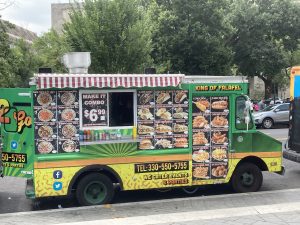
The Monuments
The ‘fulcrum’ of the city layout, the Washington Monument, was, we were informed, the tallest structure in the world, at 555ft / 169m when completed in 1884. Today, it is a popular attraction to view the city from above.
However, not for us. The day we arrived early, to catch the ‘today’s bookings’ at the box office, it was closed – apparently due to scheduled maintenance. We thought there may have been some mysterious connection with Mr. T being due in town to be charged, since there was no mention of this the previous day.
Behind the monument, as viewed from the Capitol, there were lush gardens and a series of war memorials, most imposingly the one for WWII. This, in the US stretched from 1941 (December 7th) to 1945. There were also memorials elsewhere for the Korean and Vietnamese wars, amongst others.
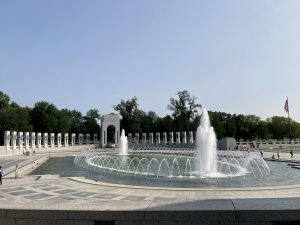
Getting to the Lincoln Memorial, made real all those images seen in innumerable films, as we grew up. The gaunt man, sitting, leaning forward, in his chair.
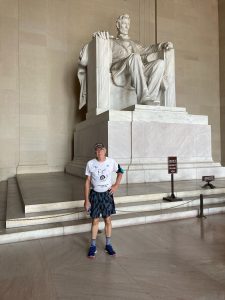
The Thomas Jefferson memorial was most impressive – the author of the Declaration of Independence, and the moving: “We hold these truths to be self evident: That all men are created equal…..”
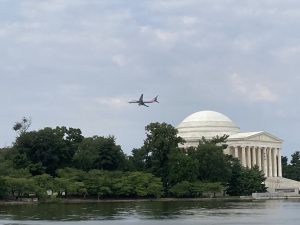
Not only did we enjoy ducking under the branches of the famous cherry trees, gifted by Japan in 1912, but we visited the Washington municipal fish market and marina, in search of breakfast. And we kept hearing the familiar tooting of the Amtrak trains as they wound their way to Union Station behind and underneath the Capitol.
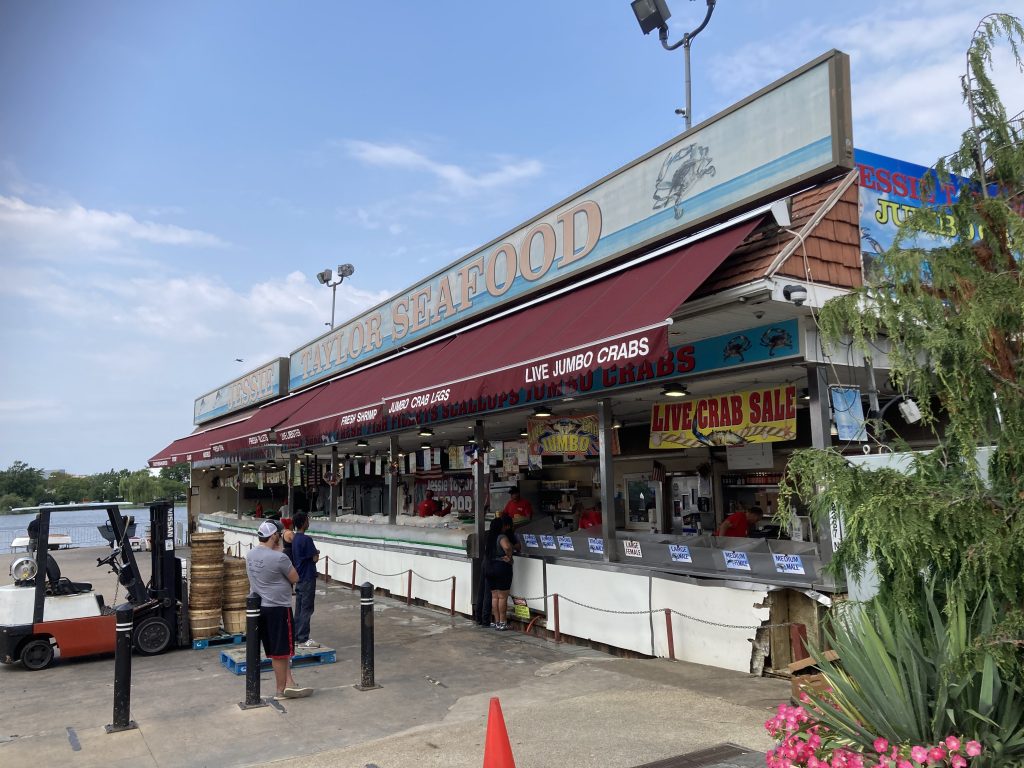
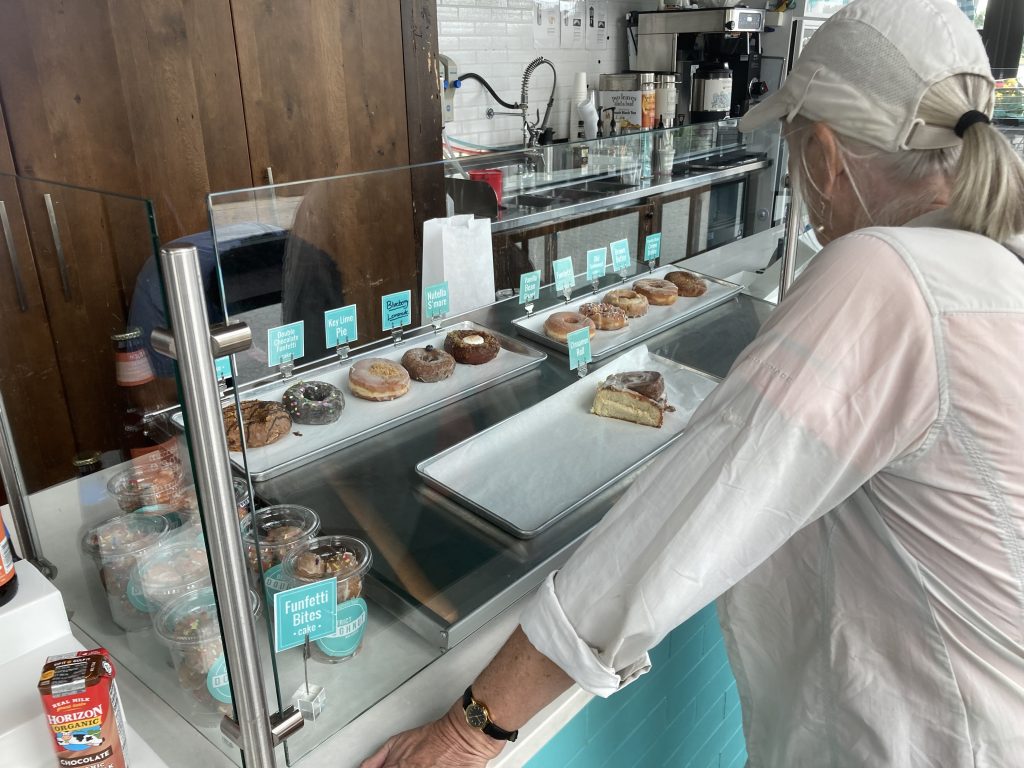
Visit to the Capitol
We decided to walk past the Capitol Visitor’s Center to see if we could secure tickets and a time slot. To our astonishment, we were ushered in immediately, and without paying. We were on our way back from a run, so we were not, in our opinion, properly attired for such an august visit! Not only that, but it was decidedly chilly in our running gear, due to overzealous air conditioning!
We witnessed a stirring film about the sacred congress before being herded into groups with radio headphones. Our group guide, “Alan is my name”, took us to the Crypt, Rotunda and the Statuary Hall. There were a lot of statues. Each State contributes two statues of worthy people.
We noted the one of Rosa Parks, which is the only statue not sponsored by a State, and the first full-length statue of an African-American in the Capitol. Currently Virginia has only one statue (George Washington) as the one of Confederate General Robert E. Lee was recently removed!
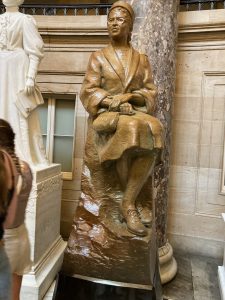
Visits
Just walking through ‘DC’ is a treat, however one could spend weeks visiting the huge number of national museums, galleries and institutions.
We spent a couple of happy hours sauntering through the US Botanic Garden, featuring trees and plants from all over the world. The tropical space was fantastic, with a high canopy walkway – but no monkeys… We liked the Bartholdi Fountain, designer also of the Statue of Liberty, and the gardens surrounding the fountain.
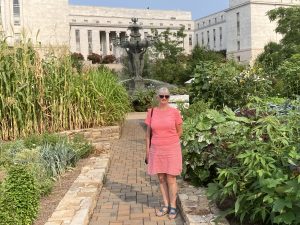
We had booked a timed entrance to the Air and Space Museum, where Peter could have spent all day. Luckily for Lynne, we only had 90 minutes before closing. There was too much to take in in one short visit, but the hall about the Wright Bothers, Orville and Wilbur, and the first powered and controlled flight on the ‘Wright Flyer’ in Kitty Hawk, 1903, was detailed and fascinating, although we didn’t spot any references to the development phase having to be financed by France, Germany and Italy, with no forthcoming US backers.

Goddard’s First Rocket 
The Wright flyer – first ever aeroplane
Peter got a real thrill in studying the details of the Mercury capsule, taking Shepard into space, and John Glenn into orbit. Then the Gemini VII capsule, and the actual Apollo 11 capsule that took Armstrong, Aldrin and Collins to the moon in 1969. The capsules were near enough to touch – had it not been for a sheet of glass in the way…

The past… 
…and future?

Mercury 
Gemini 
Apollo 11
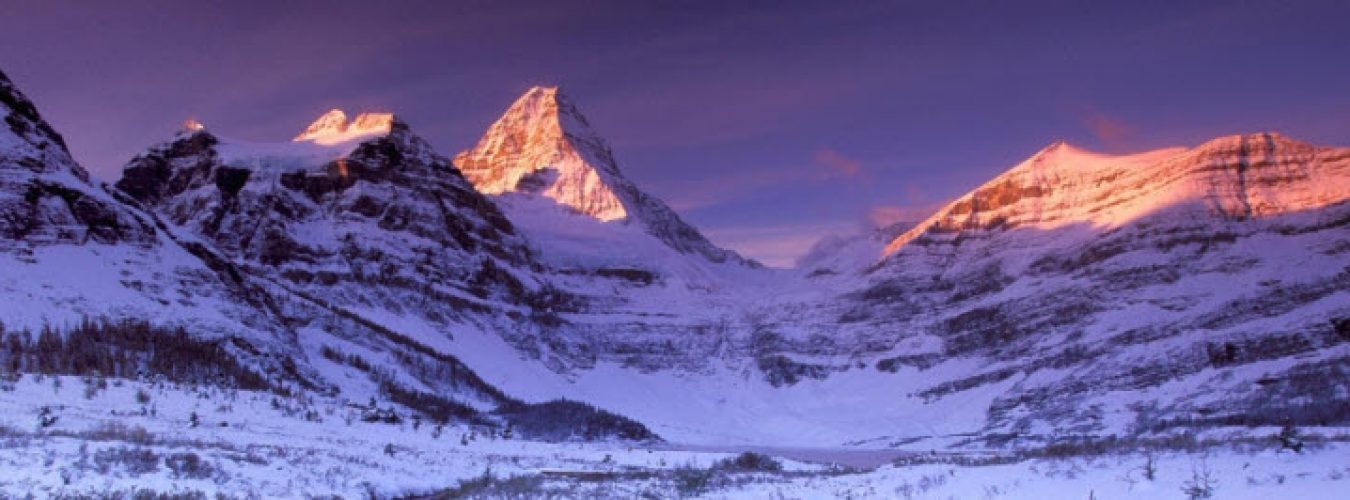
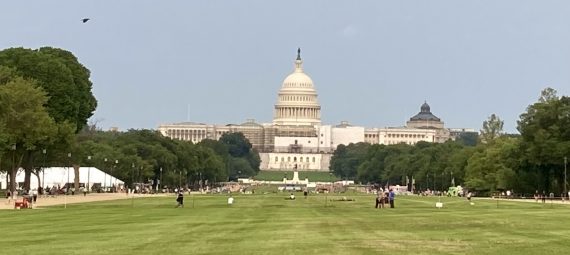
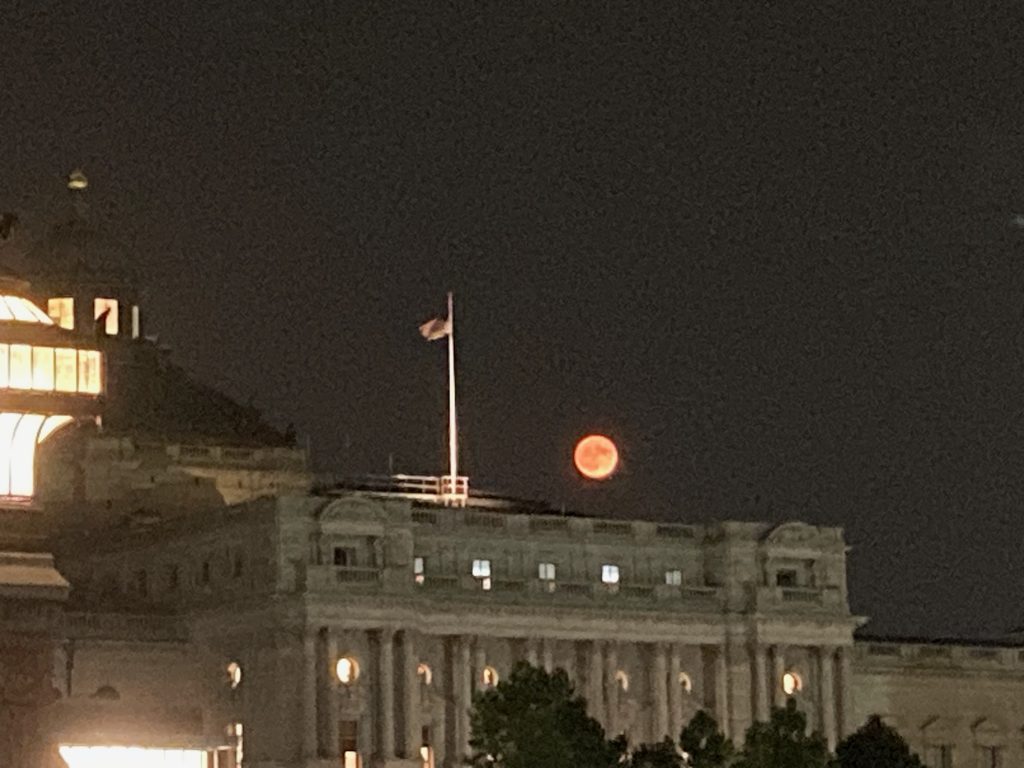
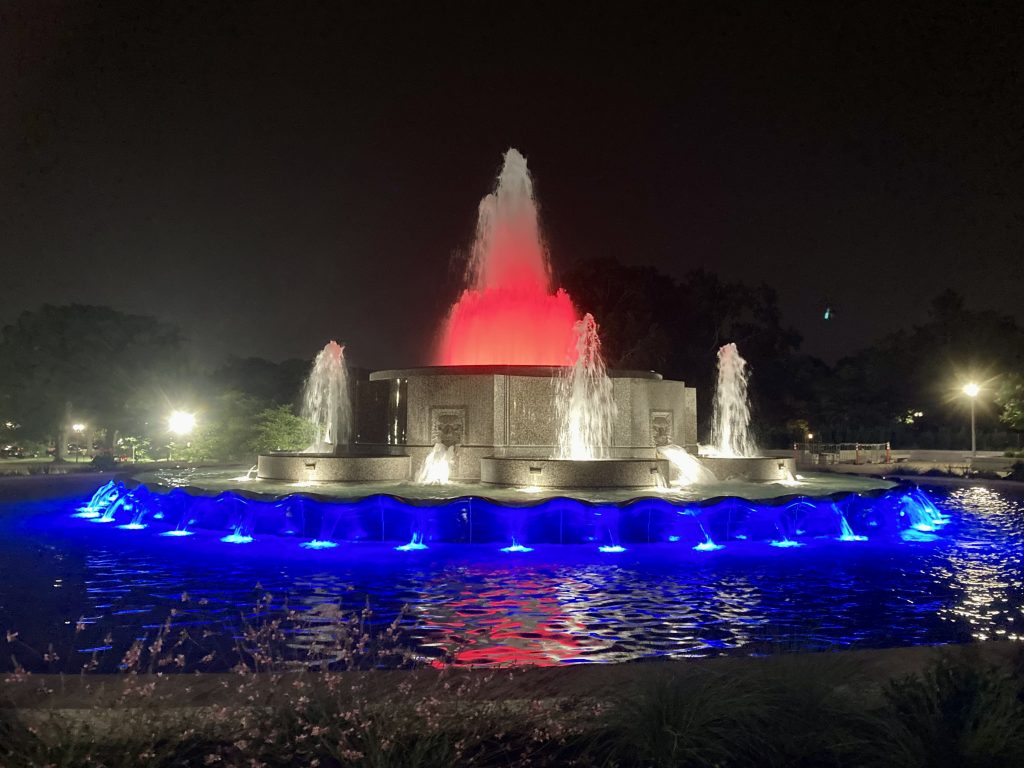
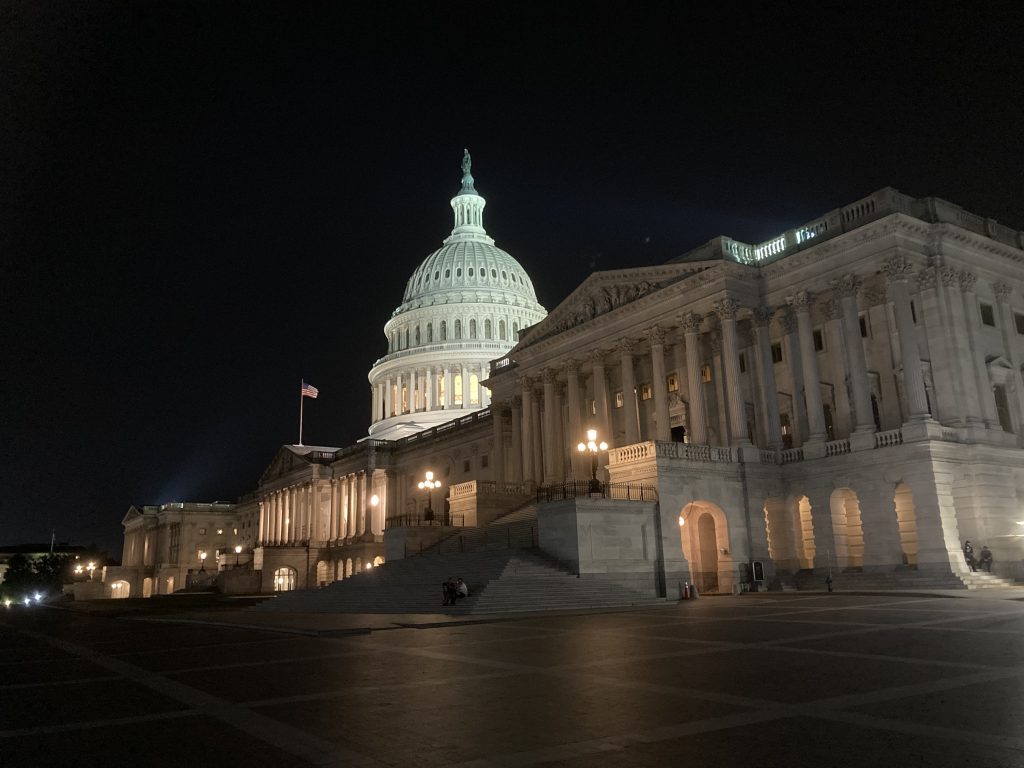
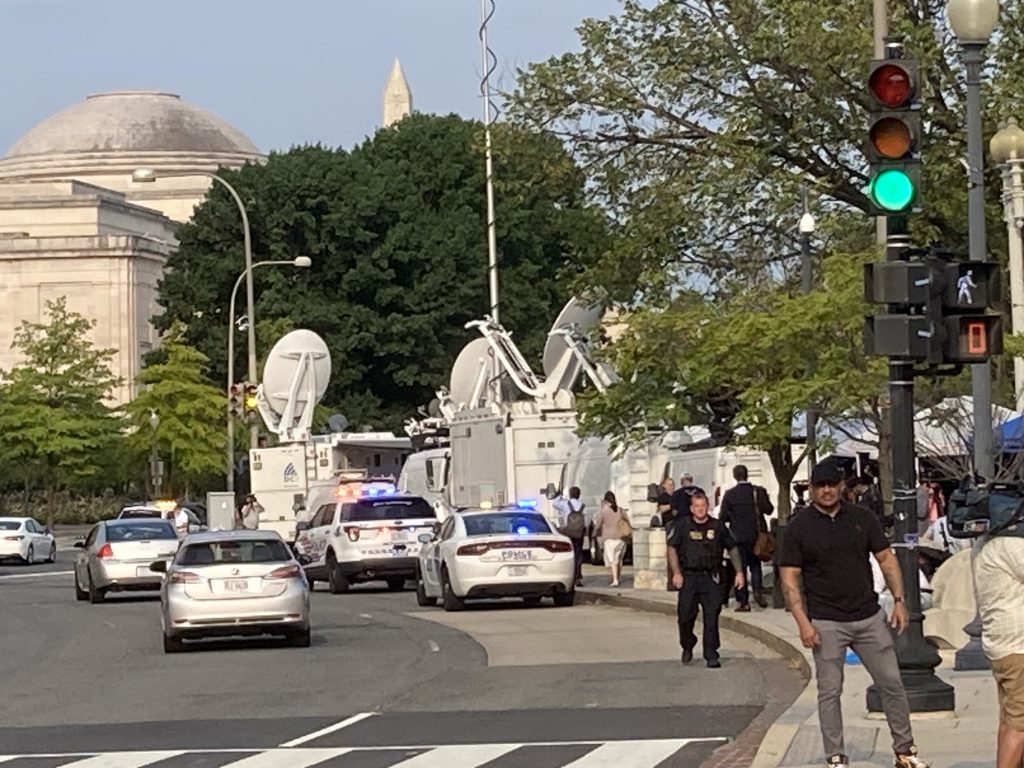
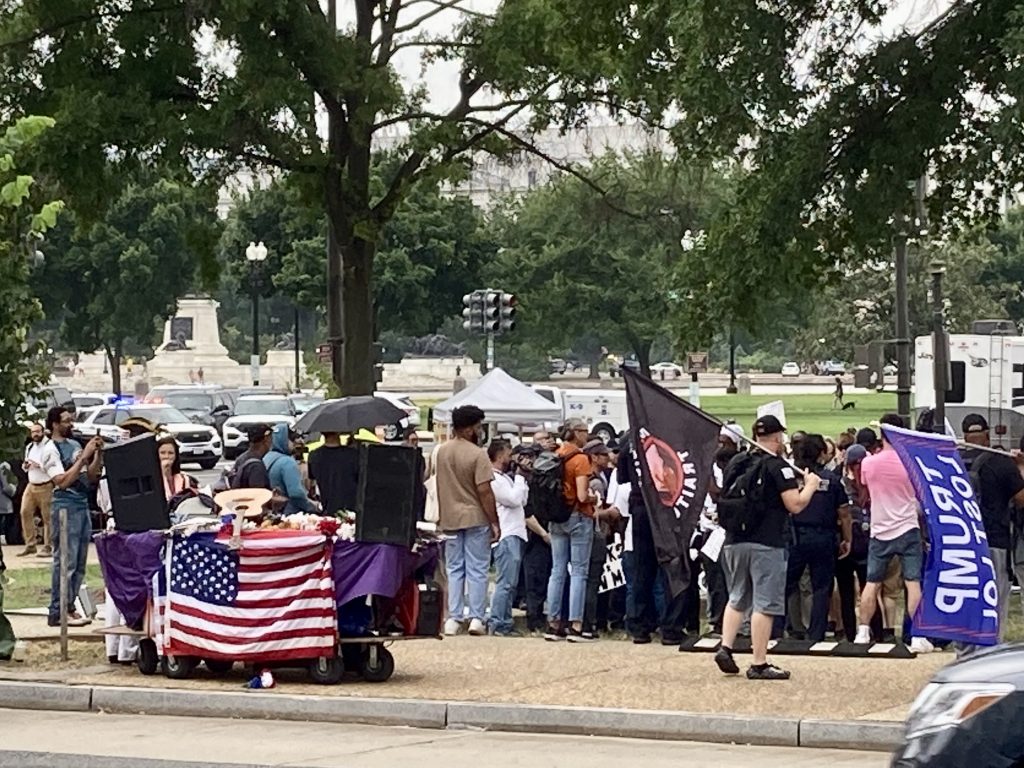
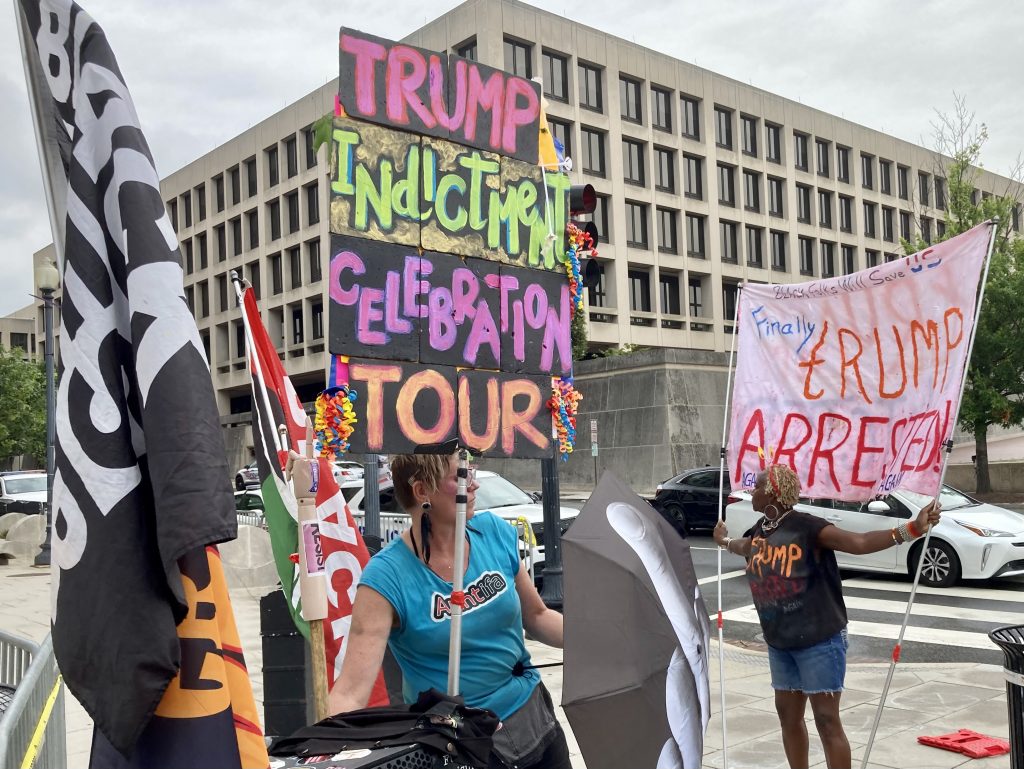
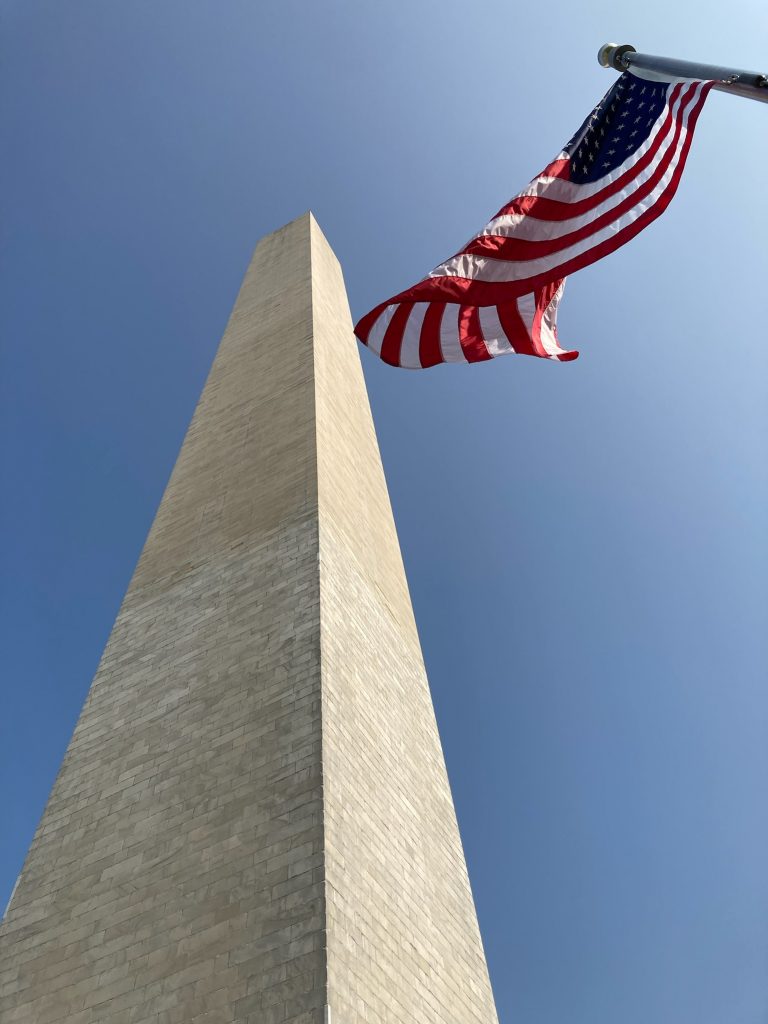
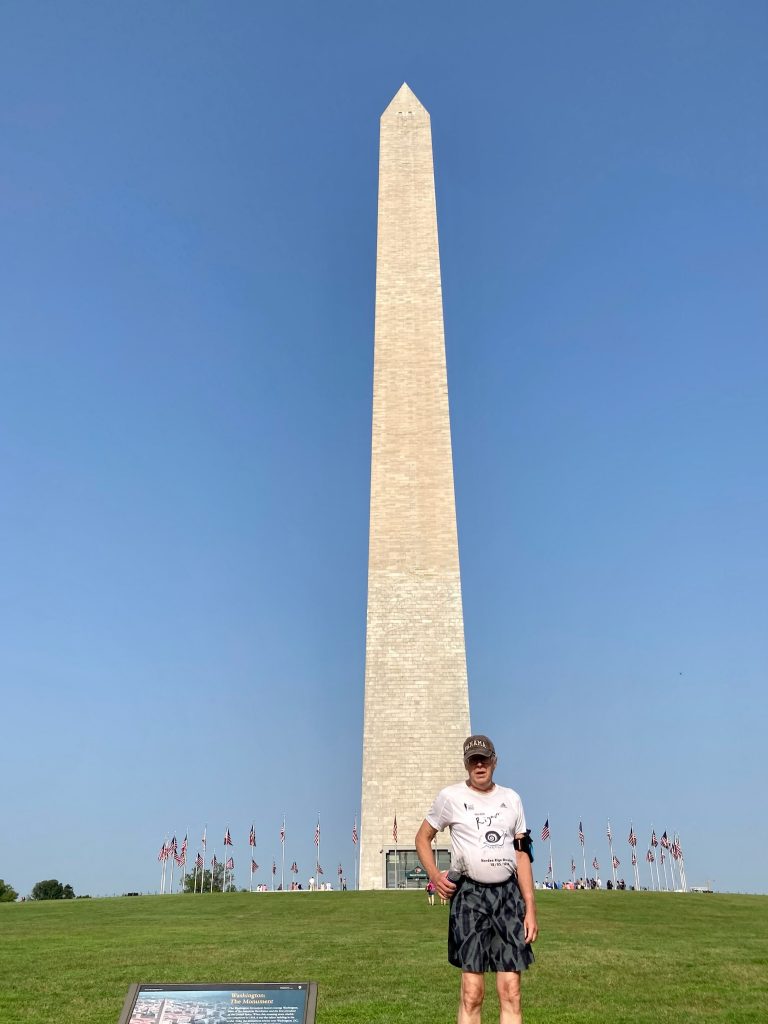
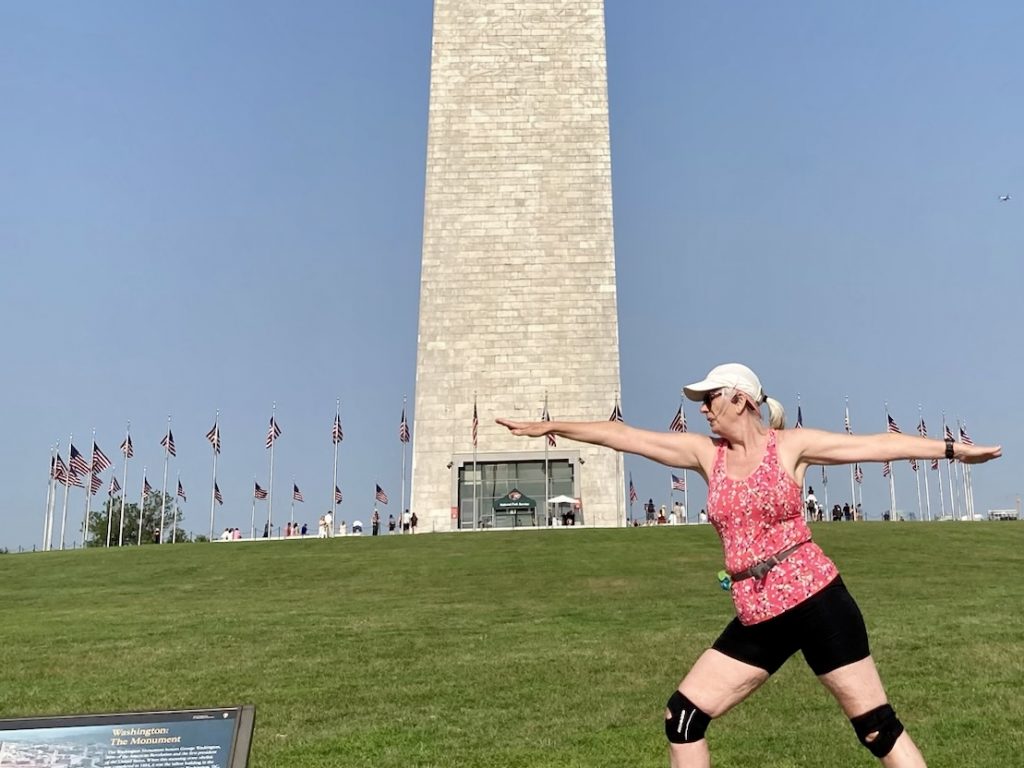
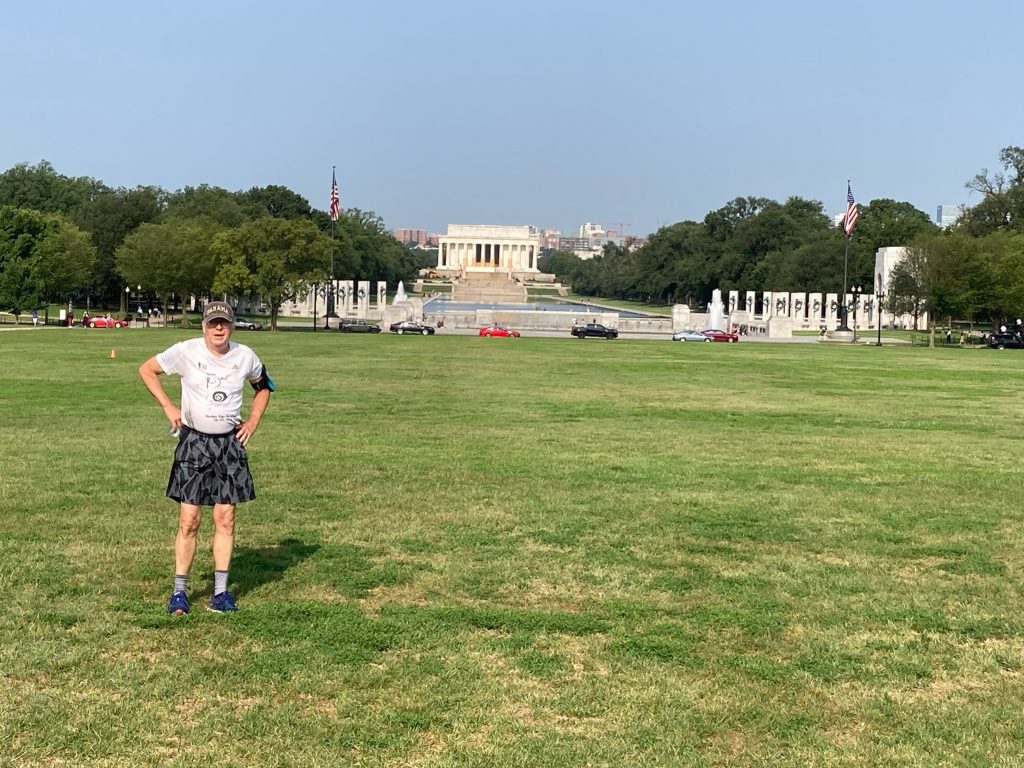
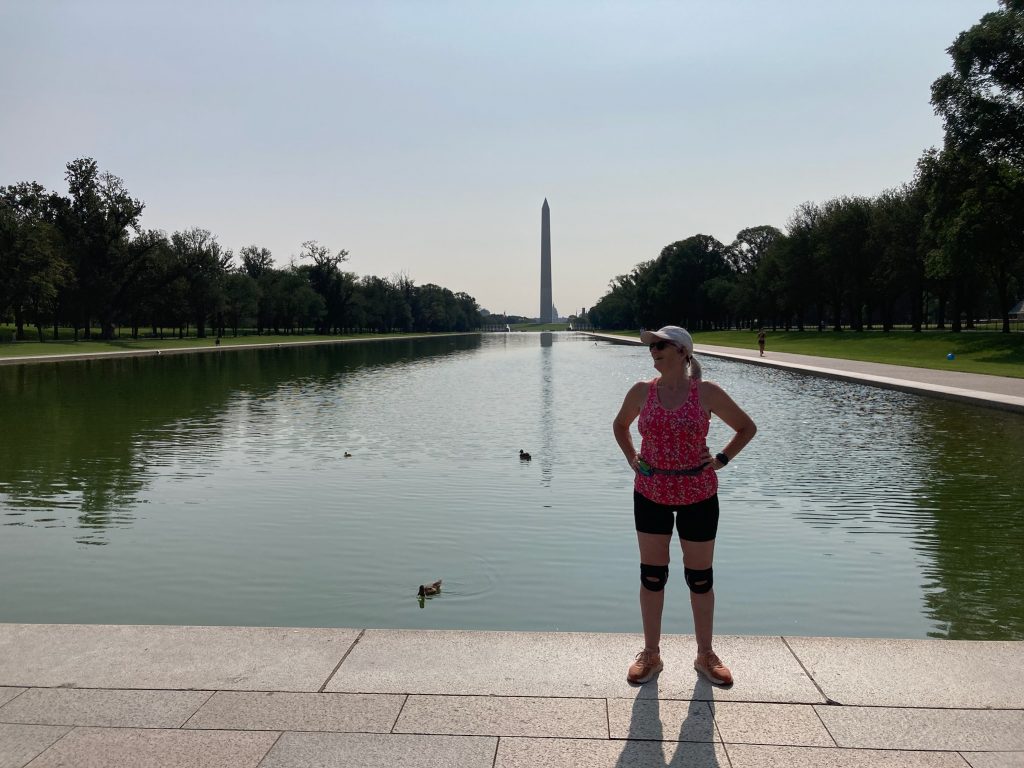
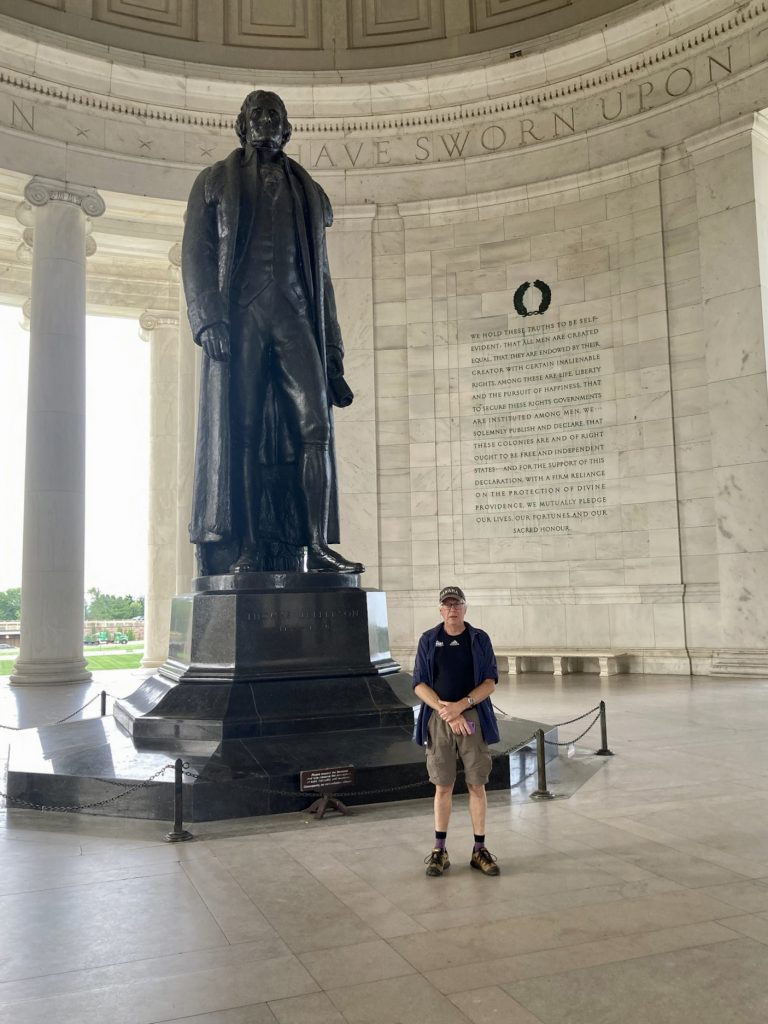
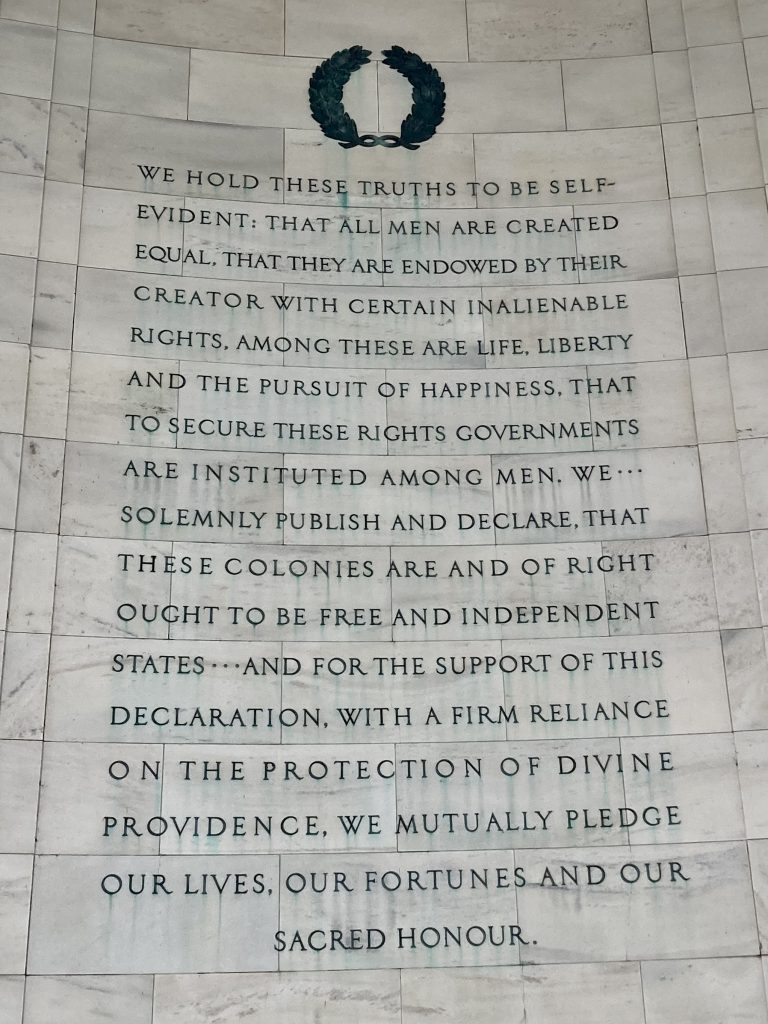
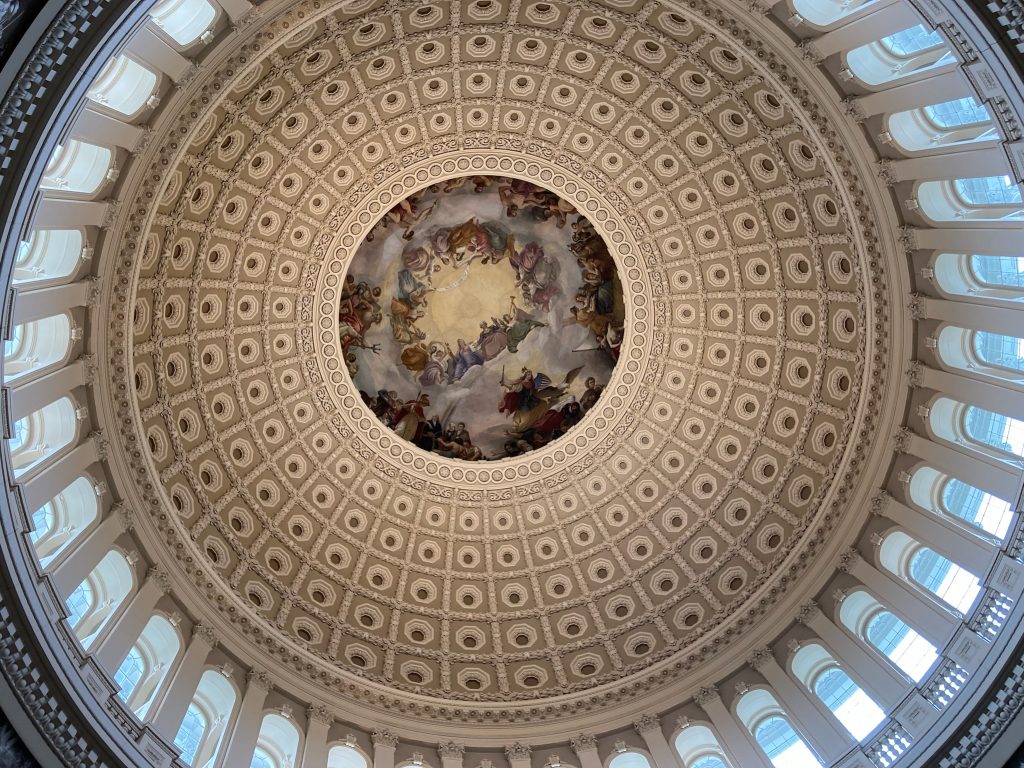
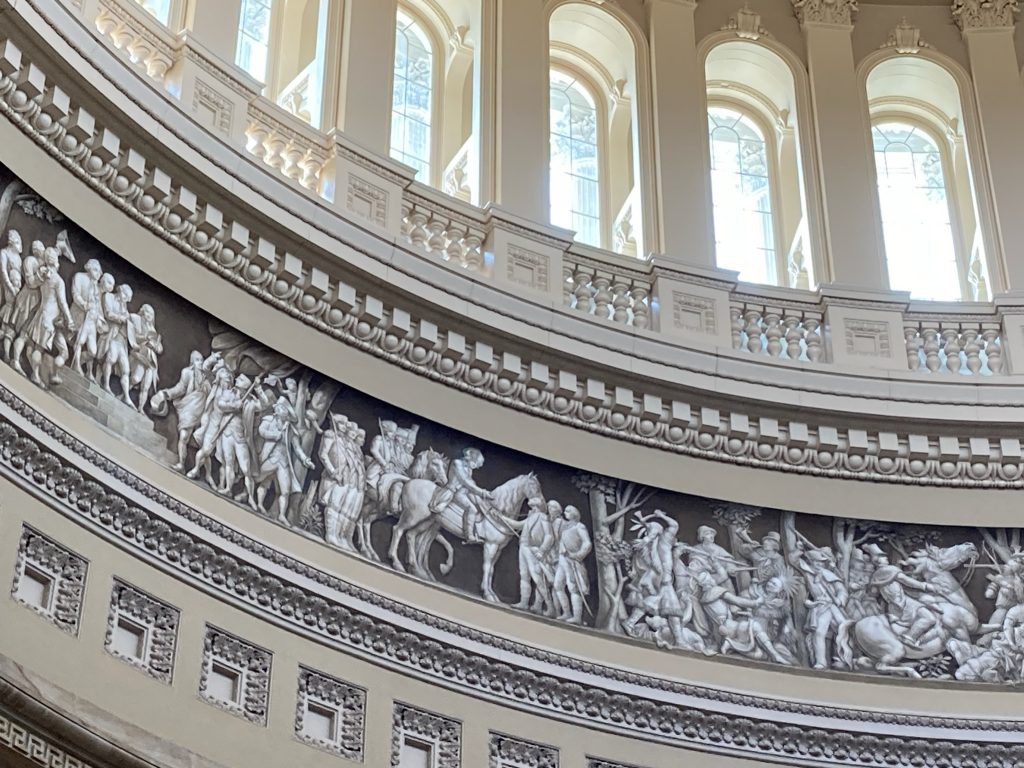
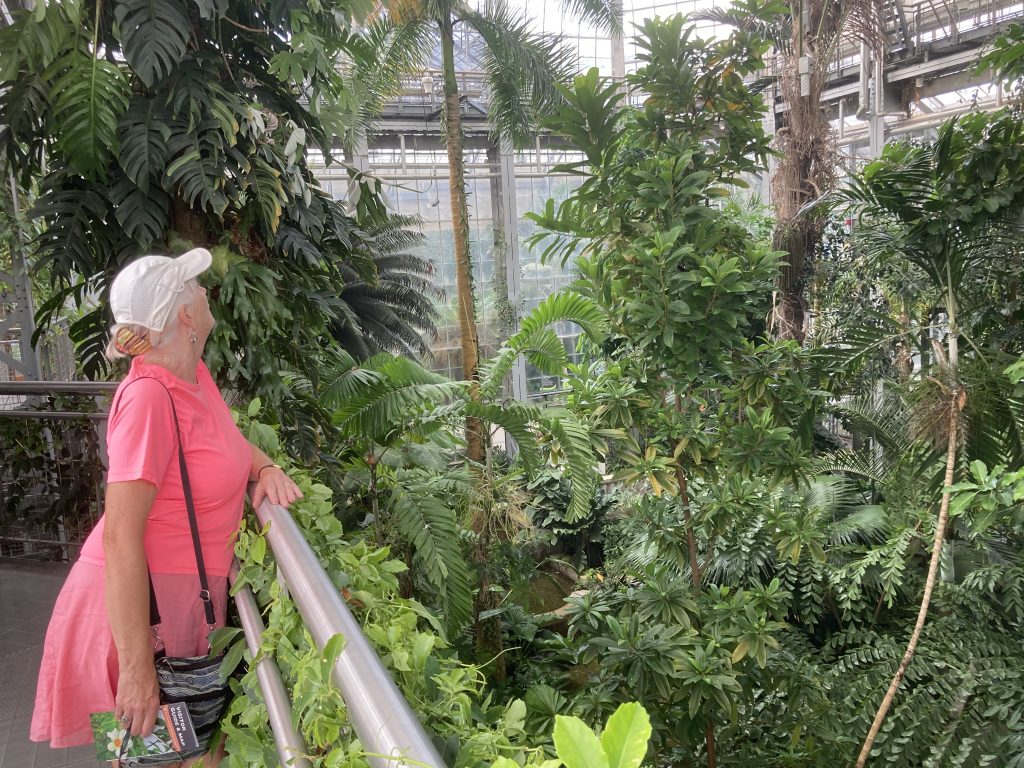

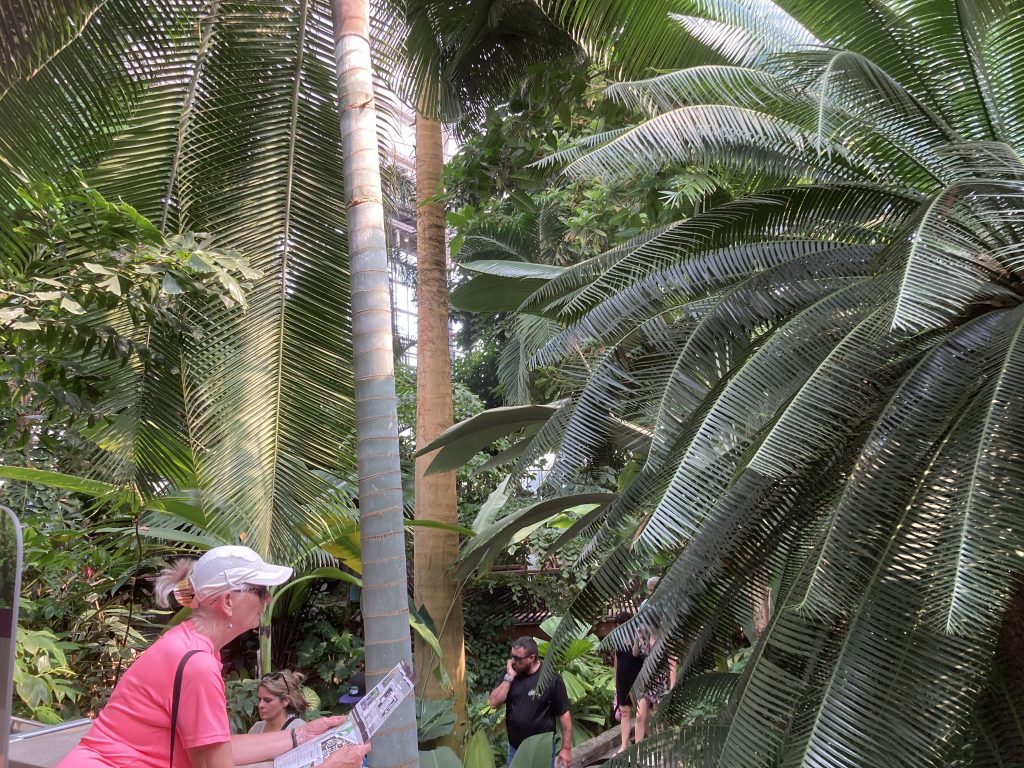
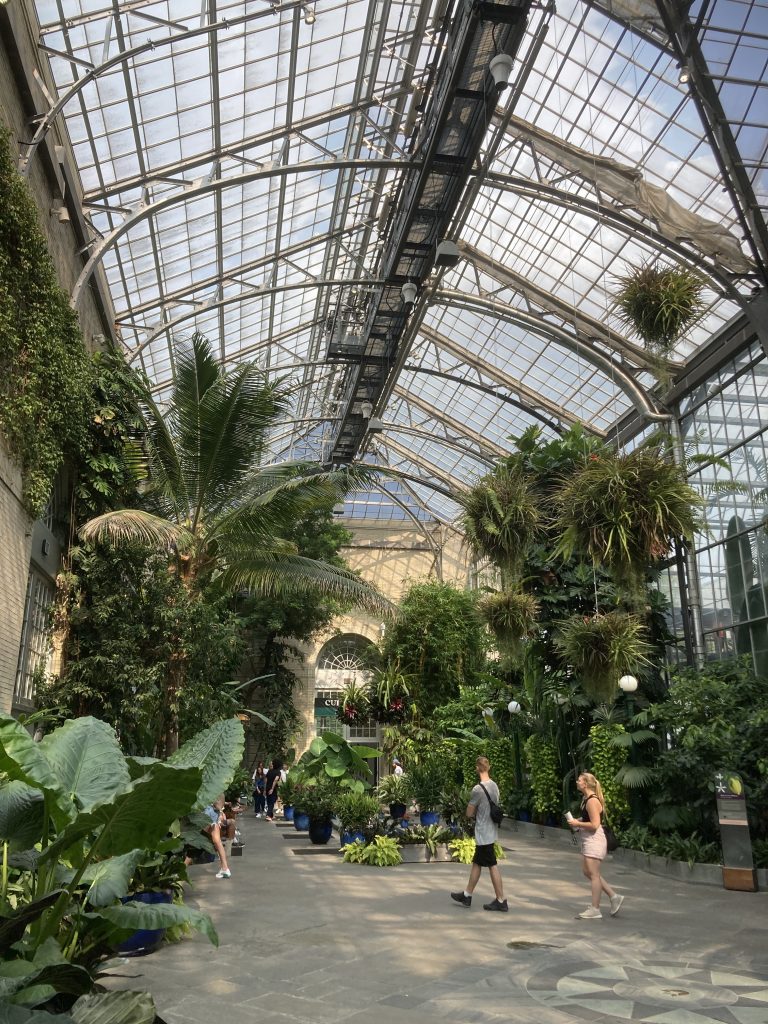
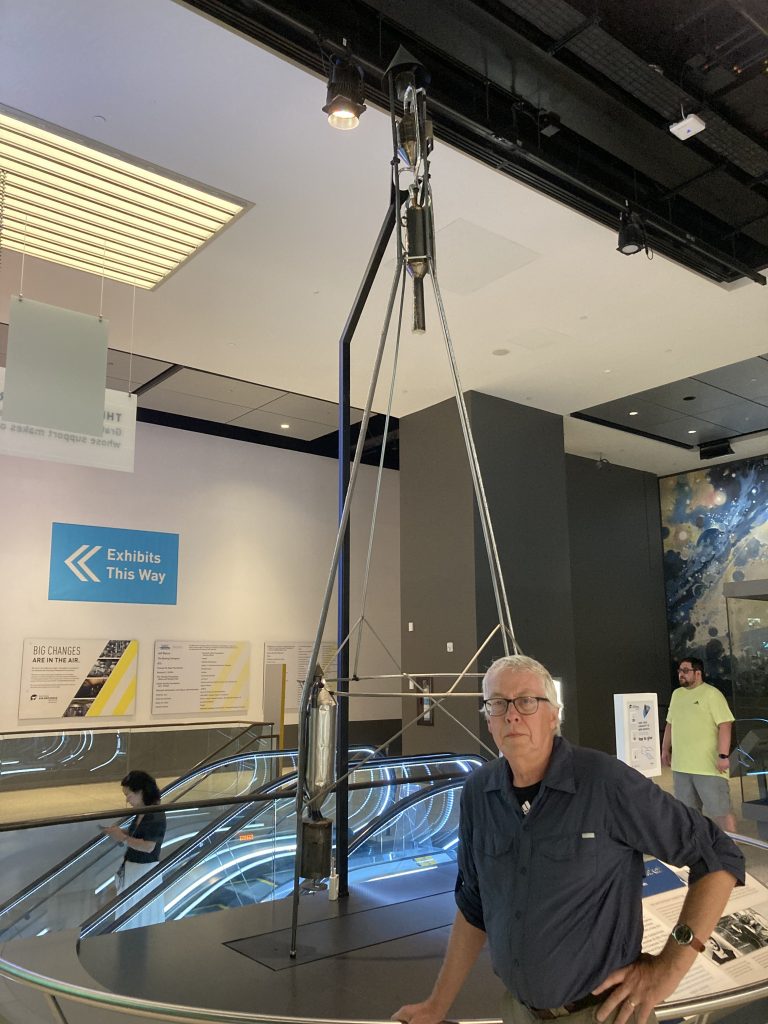
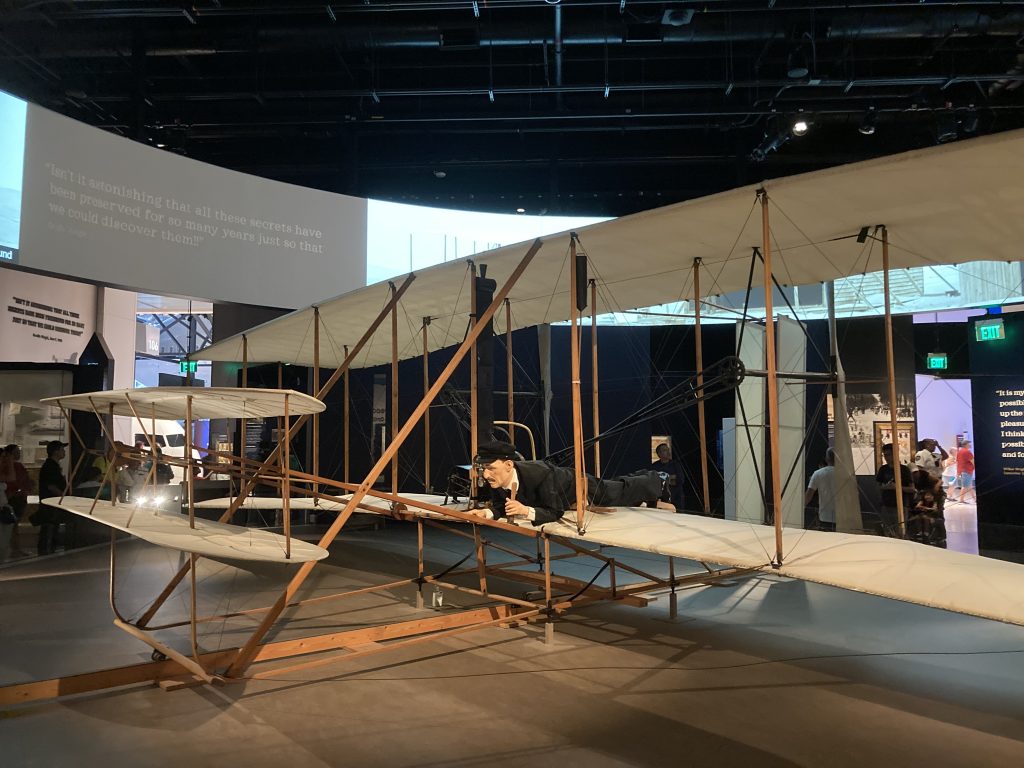
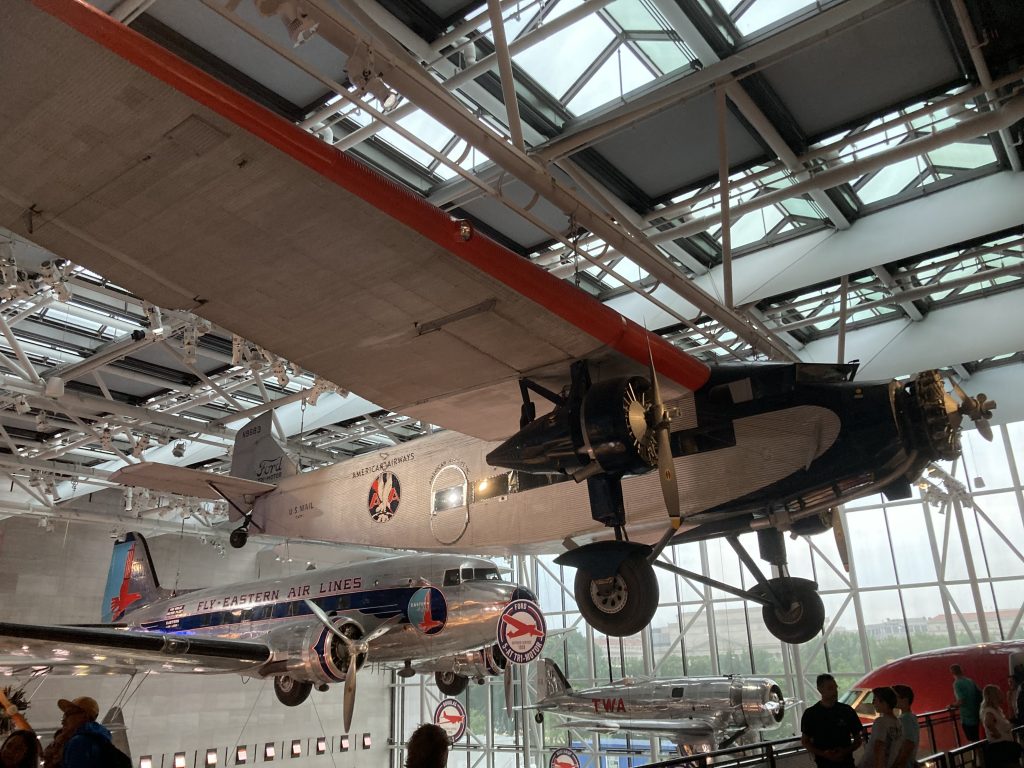
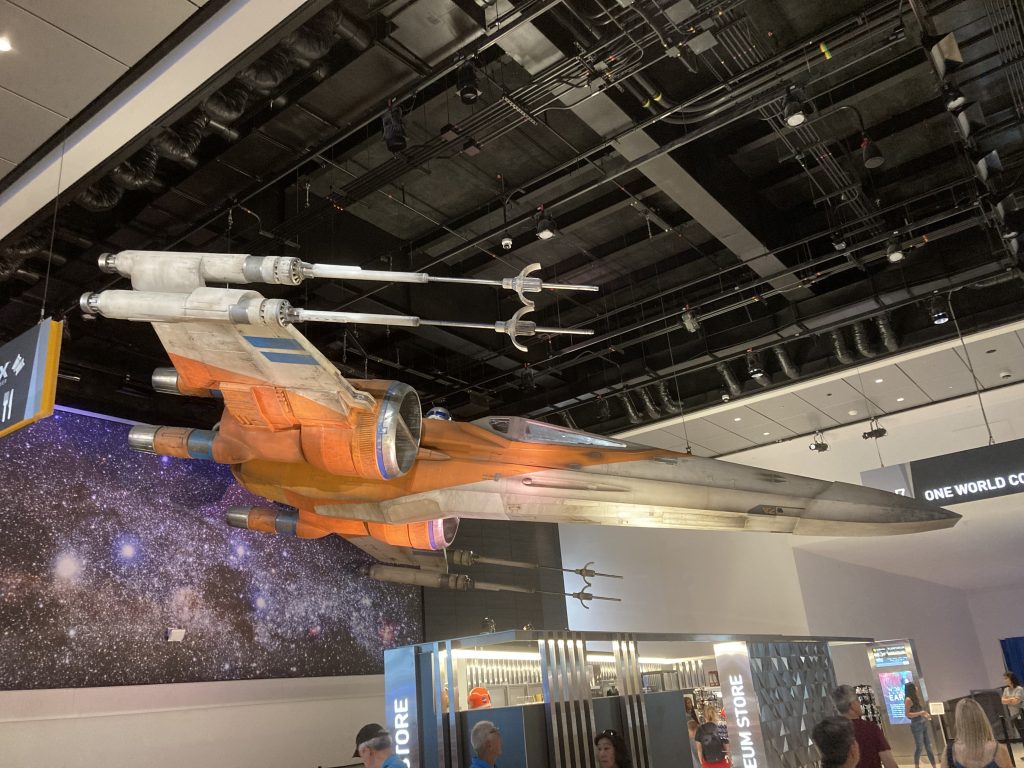
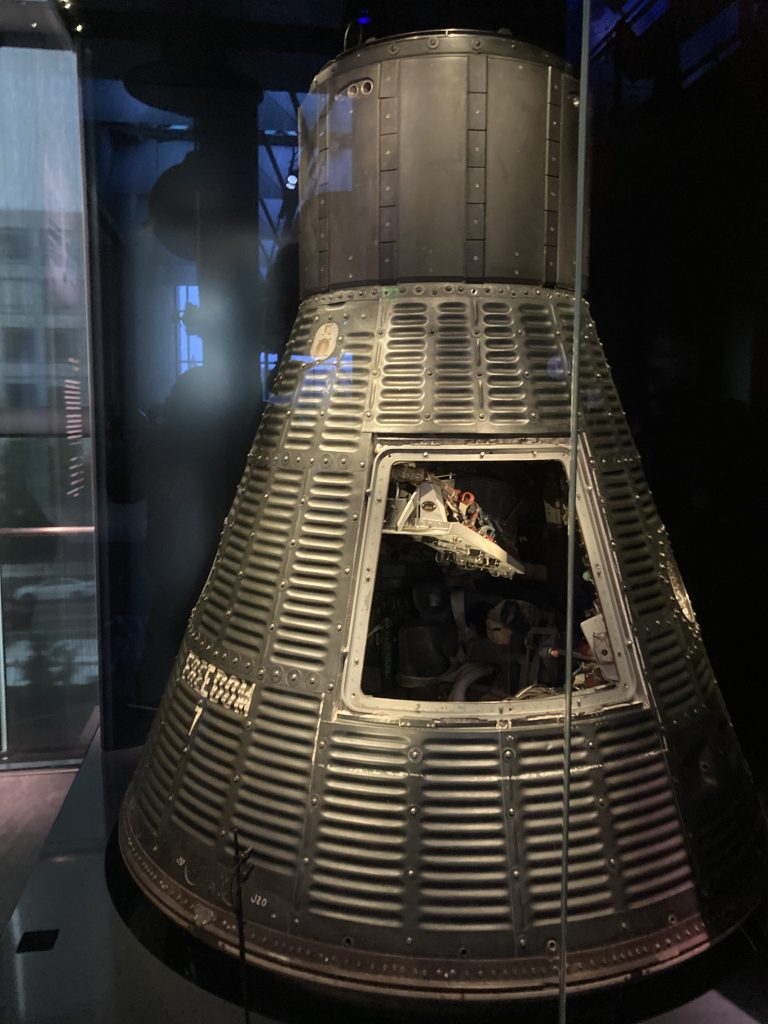
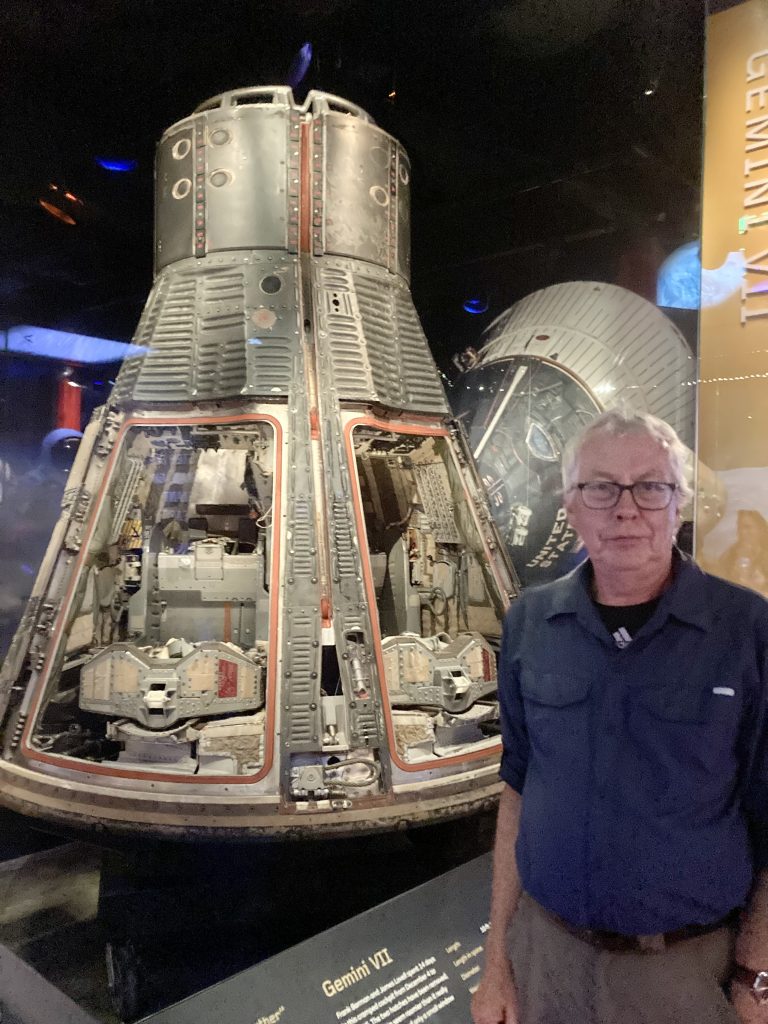
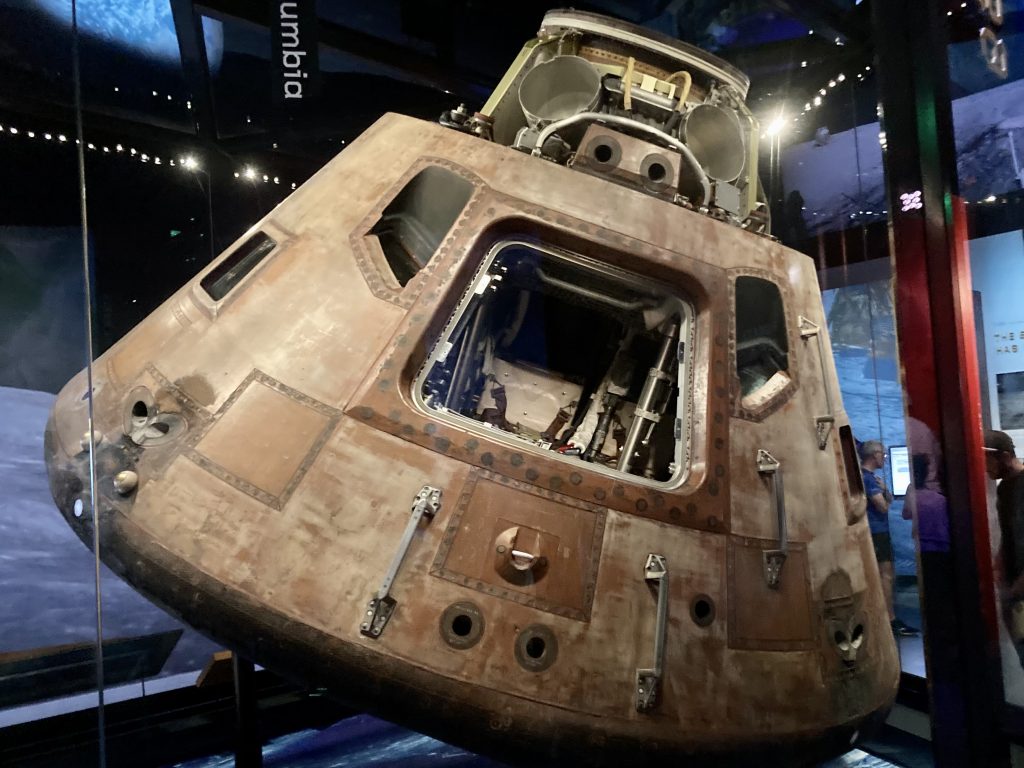
I detect a musical theme to the photos
I wonder whether you could have had kippers for breakfast (mommy dear, mommy dear) & glad you have each found somebody to love! (With thanks to Supertramp & Jefferson Airplane!). Like Peter, I would want to spend all day in the air & space museum!